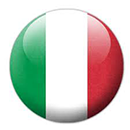|
Piazza del Duomo (Pannello C)) |



|
City Hall: Known also as Palazzo di Giano, after Florentine podestà Giano della Bella, this palace was built in the late 13th century when the city - which was then going through a period of intense economic and political development - found itself in need of a building to house its magistrature. During the first half of the 14th century, the palace (previously known as Palazzo degli Anziani) was enlarged and made more imposing with the addition of the portico to the front. In 1637 the bridge connecting the building to the Cathedral was added. Over the Medici crest on the ashlar stone façade are papal symbols added to honour Pope Leo X (1513); underneath the loggia with its sturdy pillars is the main Renaissance doorway, which has carved wood doors. The sculpture in the inner courtyard is Marino Marini's Il Miracolo (1955-56). The building, which is still used as the City Hall, also houses the Civic Museum, whose collection spans the entire artistic history of Pistoia from the 13th to 20th 18 centuries, and a visitor's centre documenting the work of leading Pistoian architect and town-planner Giovanni Michelucci (1891-1990). |
|
Palazzo Rospigliosi della Ripa del Sale: This palace, ordered by Giovan Battista Rospigliosi, or “Bati”, was built as a family residence between 1500 and 1600, incorporating 13th-century tower houses. The façade has a monumental stone doorway bearing the family crest. It now houses the Clemente Rospigliosi Museum: an extensive collection of 16thand 17th-century paintings is displayed inside a sumptuous apartment with original furnishings. Of particular interest is the series of 24 canvases by Pistoian painter Giacinto Gimignani from the mid-17th century. The Diocesan Museum on the first floor exhibits paintings, sculptures, items in gold and sacred furnishings from the diocese. The Embroidery Museum on the ground floor presents some of the oldest and most recent examples of an art form for which Pistoia is world famous. |
|
Catilina Tower: This is probably the watch tower where Catiline, the Roman politician who unsuccessfully conspired to overthrow Cicero, is said to have been buried after his defeat in the mountains near Pistoia by the consular army (62 BC). At the end of the 16th century it was also known as the Torre delle Palle, after the ball motif on the Medici crest, which indicated the nearby headquarters of the socalled Council of Secret Practices. |
|
Church of San Salvatore: Earliest records of this ancient church date back to the 10th century. The building retains the Romanesque appearance it acquired in 1270, testified to by an inscription on the façade (right-hand pillar). |
|
Ancient Church of Santa Maria Cavaliera: This early medieval building took on a more Romanesque appearance after changes were made in the 13th century. It was completely transformed in 1783, when the church was converted into a private residence. |


| CNA Pistoia - Impresa+s.coop. Realizzato da SIS Informatica. |